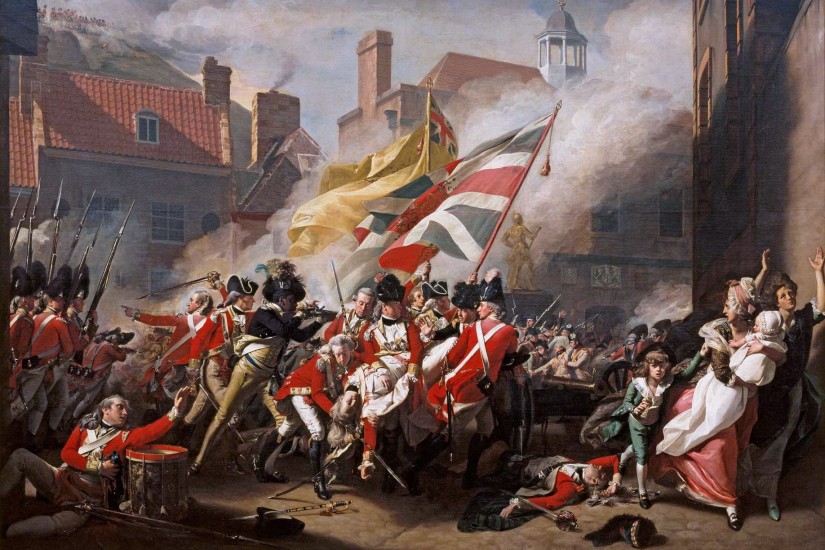It’s life or death for America, people tell you. Angry debates about taxes, religion, and race relations inflame the newspapers. Everyone is talking politics: your spouse, your teenage daughter, your boss, your grocer. Neighbors eye you suspiciously, pressing you to buy local. Angry crowds gather, smelling of booze and threatening violence; their leaders wink, confident that the ends justify the means. The stores have sold out of guns.
It’s 1775 in Britain’s American colonies. Whose side are you on?
Read two new books on the Revolution—Jane Kamensky’s A Revolution in Color: The World of John Singleton Copley and Alan Taylor’s American Revolutions: A Continental History, 1750–1804—and you may be surprised to find that you don’t know whom you’re rooting for. Which is to say, you’ll feel like a typical colonist in the revolutionary era, filled with doubt and suspicious of both sides. In the families that drive Kamensky’s story, and along the far-flung frontiers that Taylor weaves into his sweeping synthesis, empowerment and exhilaration are rivaled by horror and hesitation in the face of an uncertain cause.
The painter John Singleton Copley was “a spiky, anxious man, raised poor in a spiky, anxious place”: colonial Boston, where theater was taboo and dancing controversial. The stuttering son of a widowed and cash-strapped tobacconist, he grew up to paint preeminent American patriots and British royals; his renown, like his sympathies, straddled the New World and the Old. He even met George III after making his way in 1774 to Britain, where he became known as a self-promoting social climber who tried too hard. But Copley’s skill was beyond dispute, at least until the lead from a lifetime of pigments seemed to accelerate his decline. In his prime, he painted water that whipped, dresses that gleamed, and eyes that emoted. With canvas and paint, he captured life and passion.
Kamensky, a Harvard historian, manages a similar feat in her fourth book featuring Boston and its environs, an account that deserves to be called, as she does Copley’s best work, “a sensory tour de force.” As a boy, Copley “fell asleep to the twang of halyards and woke to the shouts of sailors and hawkers, and strumpets trudging home from the taverns to sleep.” As a teenager, he toiled in the long summer daylight on which painters then, as now, depended, and he progressed with astonishing speed. Hands that looked like candle wax in 1753 (when he was 15) became hands of flesh and blood and motion in 1754.

